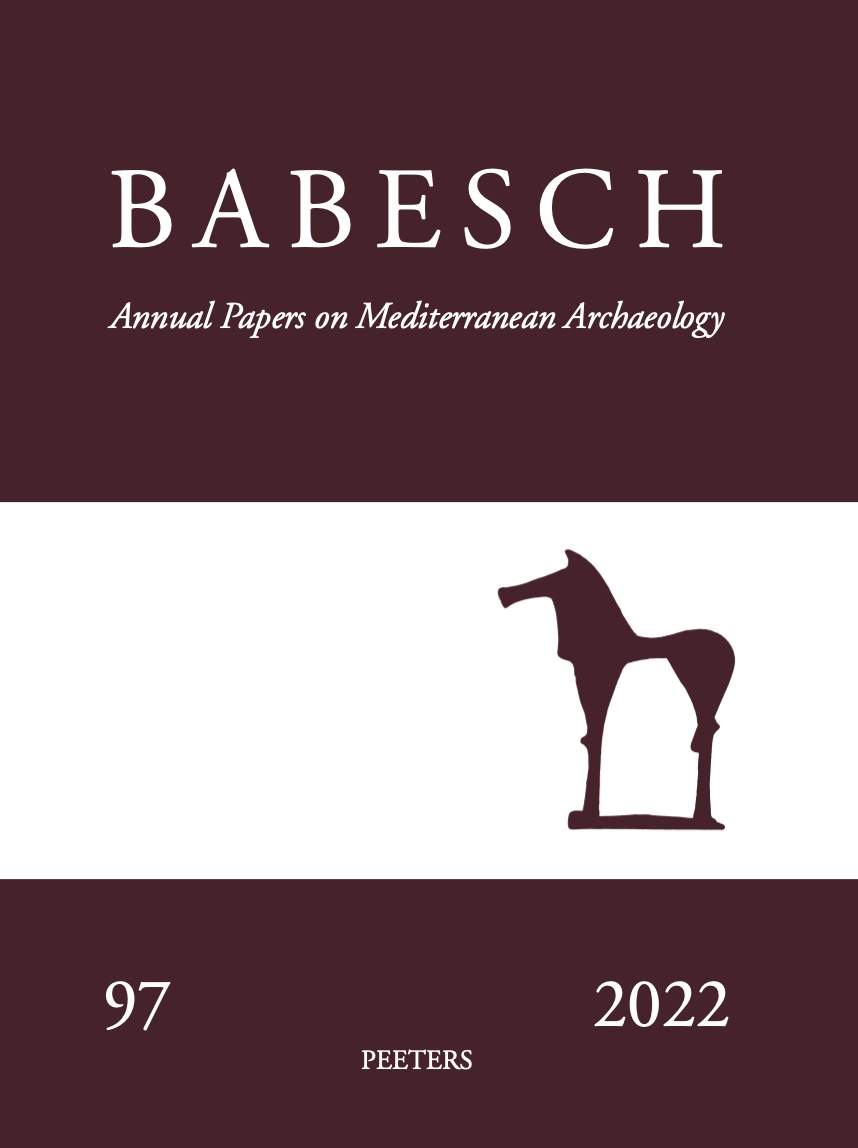 previous article in this issue previous article in this issue | next article in this issue  |

|
Document Details : Title: The Ivories from the Shaft Graves at Mycenae Author(s): VELSINK, Jan G. Journal: BABESCH Volume: 78 Date: 2003 Pages: 1-33 DOI: 10.2143/BAB.78.0.503919 Abstract : The Shaft Graves at Mycenae, discovered and excavated in 1876 by H. Schliemann (Grave Circle A) and in 1952-54 by J. Papadimitriu and G.E. Mylonas (Grave Circle B), contained the earliest known ivories from the Greek mainland (MH III-LH IIA). However, these finds have never been thoroughly examined, not even by J.-C. Poursat, who concerned himself closely with the development of Mycenaean ivory carving. Probably this is because of the ivories’ mostly fragmentary character and the presence in these graves of more eye-catching objects of gold and other precious materials. The article presents a catalogue and discussion of the ivories. Included are illustrations of two representations on pyxis fragments which are published here for the first time: a rearing quadruped by the sea, and the earliest depiction of a chariot on an ivory from the Aegean Bronze Age. The conclusion is that at the time of the Shaft Graves a strong Cretan stimulus largely determined the use of ivory on the Greek mainland. |
|
